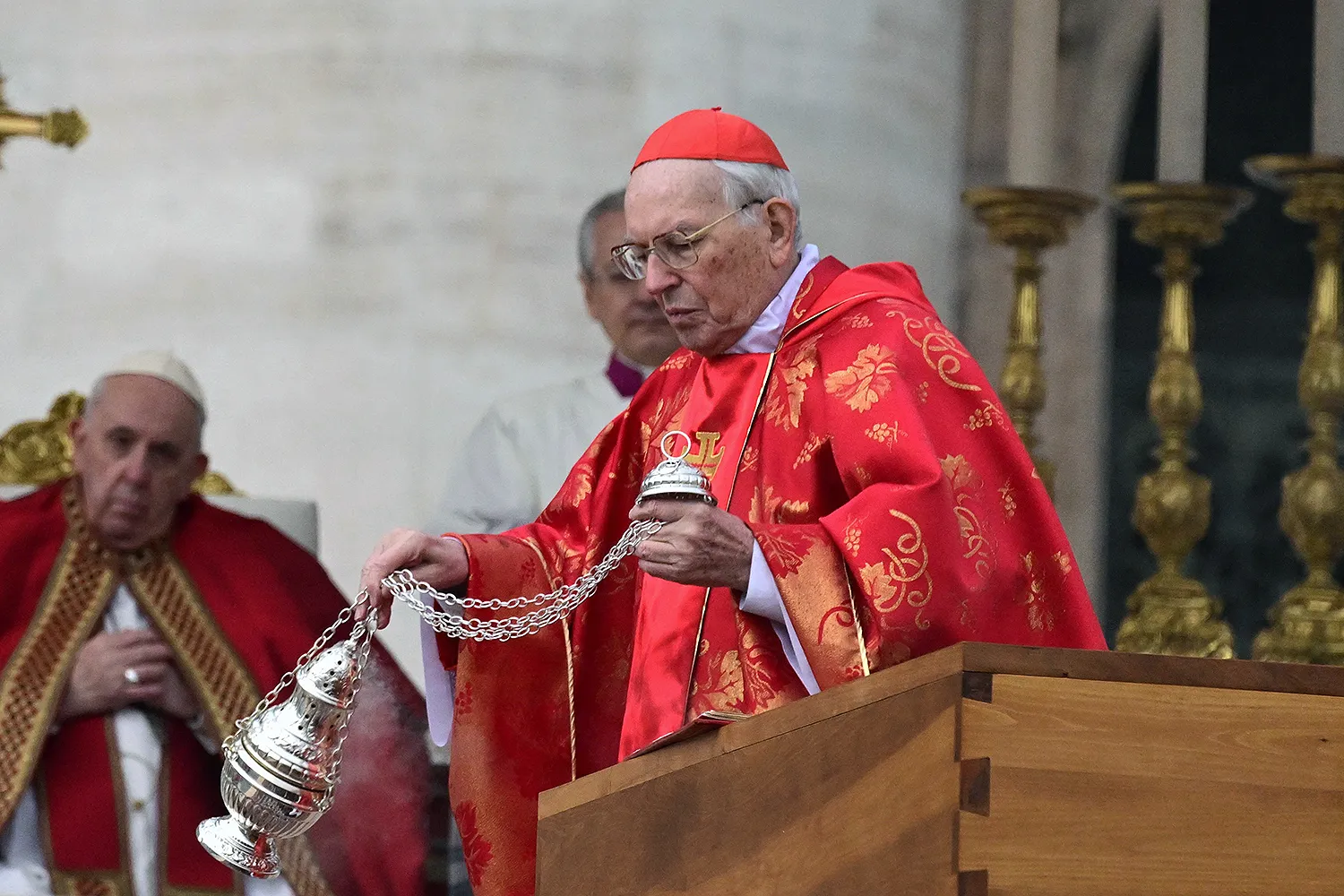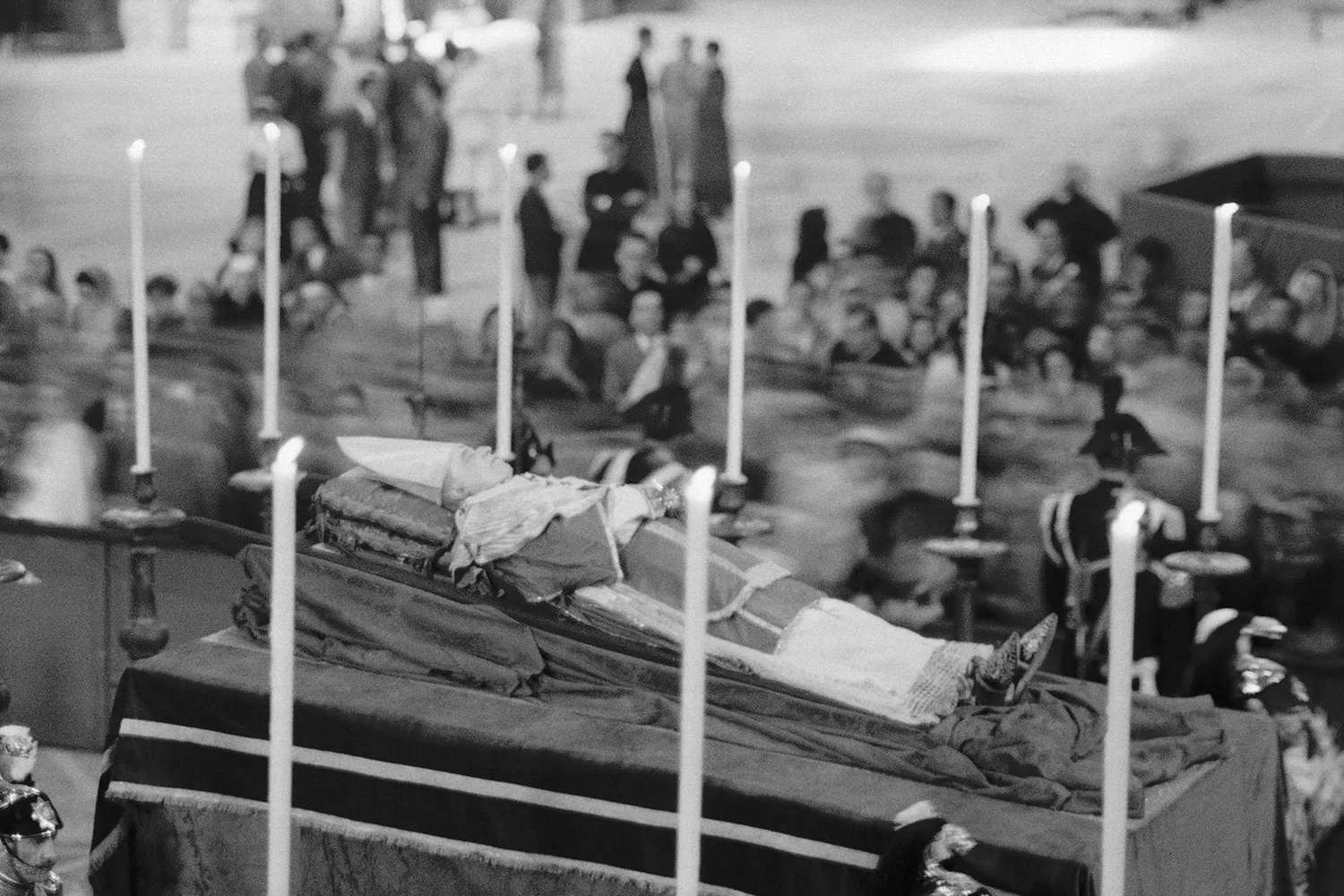Sede vacante. The Holy See is vacant.
Pope Francis, the first Latin American pontiff in history, died at age 88 on Monday at his residence in Vatican City. Born Jorge Mario Bergoglio in Argentina, he led the Catholic Church for 12 years.
Francis was hospitalized for 38 days in February for double pneumonia. His doctors later revealed that he had had two close brushes with death. Francis was discharged from the hospital a month ago and had made several public appearances since. Most notably, he attended the Vatican’s celebrations on Easter Sunday. “Dear brothers and sisters, Happy Easter,” Francis told the crowds, before being driven across St. Peter’s Square on the popemobile, waving at the faithful. In hindsight, it was a fitting send-off for a pontiff who had become the people’s pope.
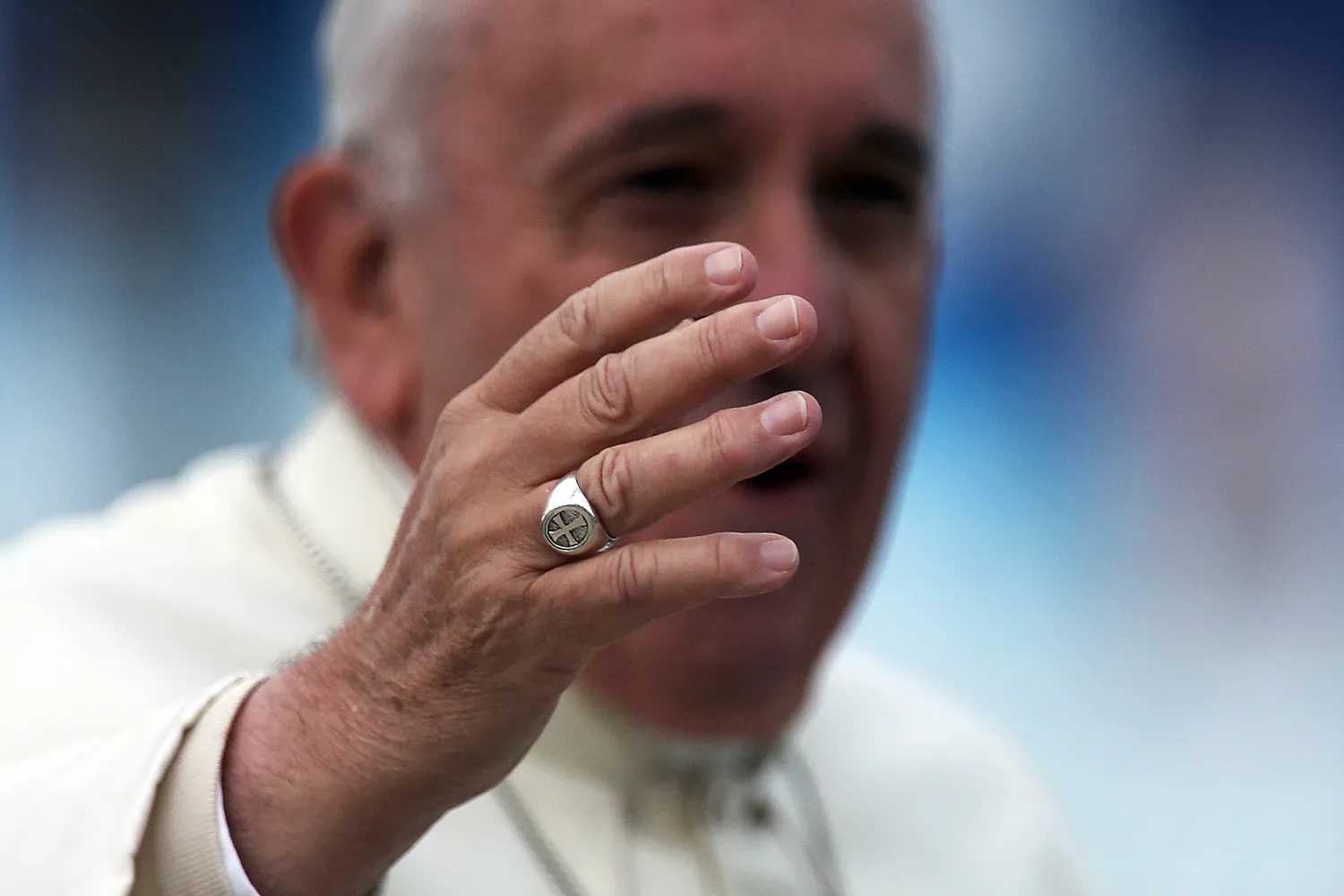
At times like these, the ways of the Vatican can appear mysterious. What happens after a pope dies? Who governs the Holy See? And how is a pope elected? Most non-Catholics are probably trying to remember the plot of the 2024 movie Conclave right now.
All eyes are now on the camerlengo, or chamberlain, Cardinal Kevin Joseph Farrell. He will run the Holy See until a new Holy Father is elected. No time is wasted after the pope dies. His body is quickly embalmed and then put on display for three days in St. Peter’s Basilica in Vatican City.
Next comes the funeral, which also takes place in St. Peter’s Basilica or, if the weather permits, just outside, on St. Peter’s Square. The dean of the College of Cardinals always presides over the ceremony. Giovanni Battista Re, the current dean, has served in the Curia since the 1960s. If anyone knows how to compose a homily, it’s a man who has seen the deaths of multiple popes.
Since the beginning of the 20th century, popes have been buried in the ornate grottoes beneath St. Peter’s Basilica. But, in 2023, Francis decided to break with protocol. He will be interred in St. Mary Major, a basilica in the center of Rome, because of his “great devotion” to the Virgin Mary.
Although the official mourning period for the pope lasts nine days, the process for selecting a successor starts as soon as he has drawn his last breath. As the Italian proverb goes, morto un papa, se ne fa un altro. When a pope dies, another is made. In other words, not even the vicar of Christ is irreplaceable.
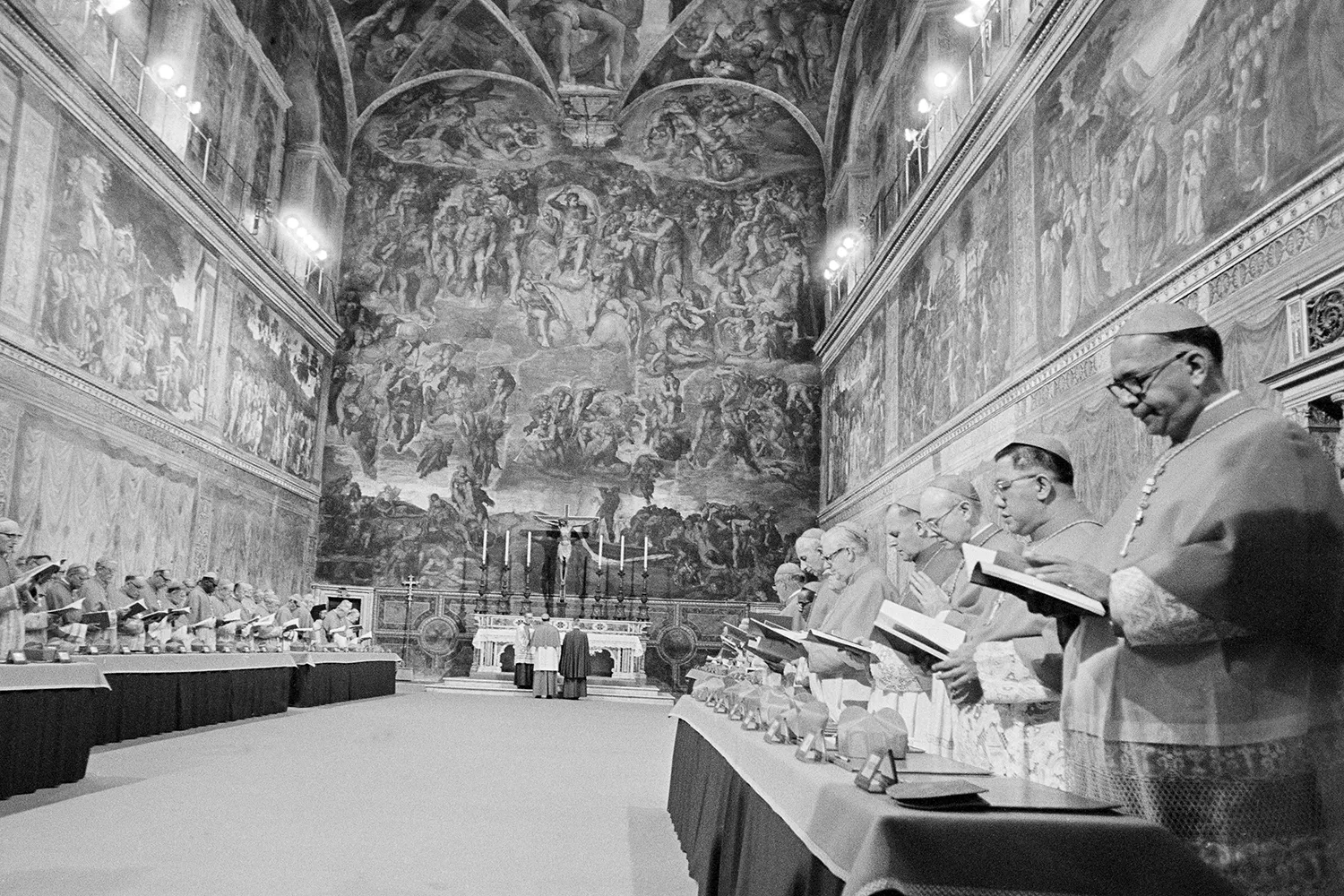
The new pope is chosen by conclave, the papal election dramatized in the hit film. It occurs roughly two weeks after the pope’s funeral. Only cardinals under the age of 80 can take part in it. This means that, out of a current total of 252 cardinals, 138 will pick the next leader of the Catholic Church—a global institution with more than 400,000 clergy members and 1.3 billion lay Catholics.
The conclave occurs in the Sistine Chapel, beneath a ceiling painted by Michelangelo. The doors are locked, and the cardinal electors can have no contact with the outside world. During this time, they are supposed to let the Holy Spirit guide their decision. Concretely speaking, it works like this: Cardinals are given a piece of paper with a header in Latin that reads simply, “I elect as supreme pontiff,” and they write down the name of their chosen candidate below.
To win, a candidate must secure a two-thirds majority. Until that happens, voting continues. Only one round is held on the first day of the conclave, but after that, up to four rounds can take place each day.
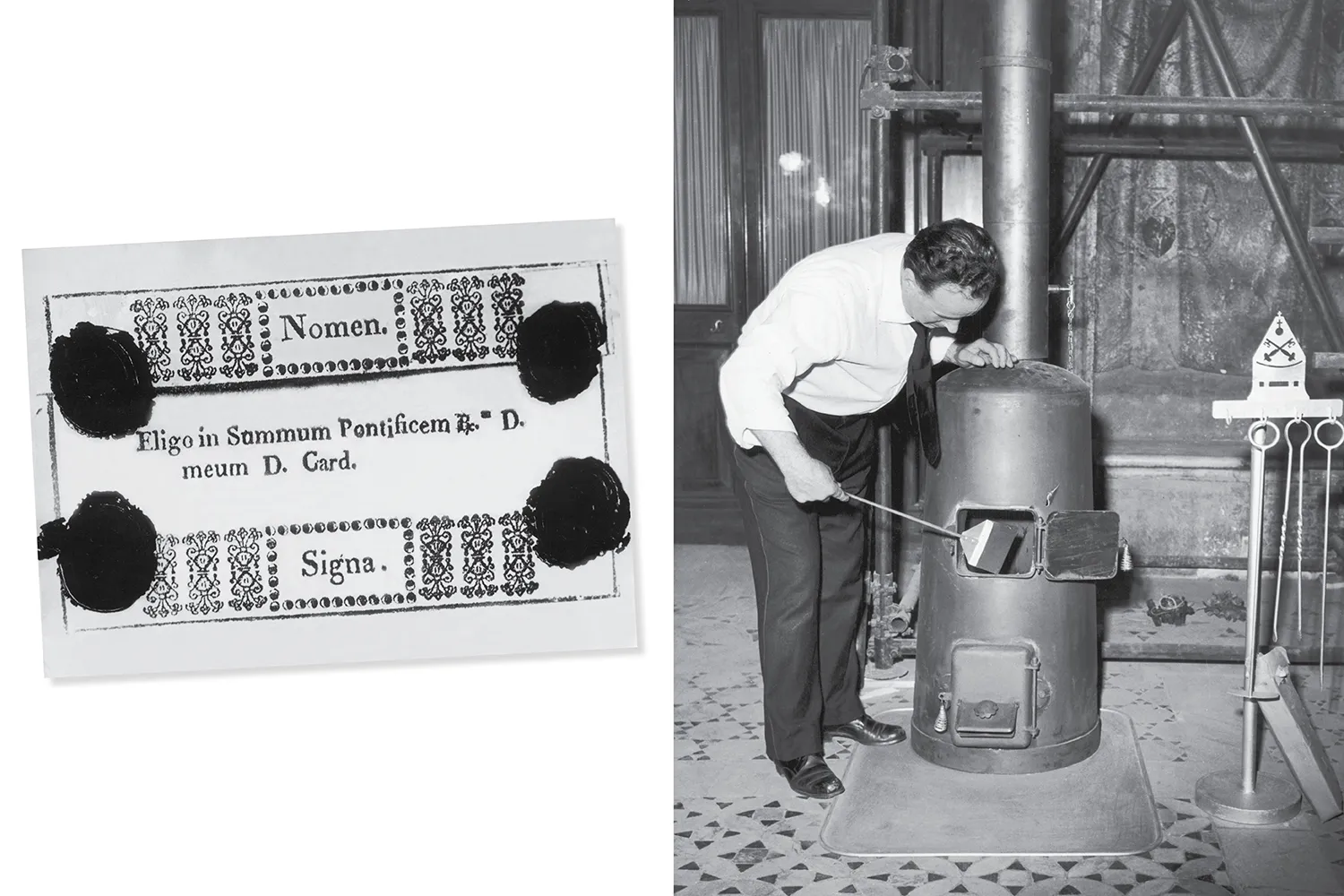

While the conclave is à huis clos, the outside world watches closely. The cardinals have only one way to communicate their progress: a chimney on St. Peter’s Square, connected to the Sistine Chapel. When a vote is inconclusive, the cardinals burn the ballots. In a separate furnace, they add chemicals to produce black smoke. When a pope has been elected, they burn the ballots one last time; this time, the smoke turns white. Habemus papam.
Conclaves vary in length. In 2013, Francis was elected after only 24 hours. By comparison, it took cardinals five days and 14 rounds to choose Pius XI in 1922.
Though the conclave is the final act in “making” a pope, what happens before matters, too. In the days leading up to it, the dean of the College of Cardinals convenes general congregations. All the cardinals, regardless of their age, take part. General congregations provide an opportunity to discuss the direction of the church and the qualities that the next pope should have.
The whole process is akin to politics, just swap the dark suits for bright red soutanes. “If history teaches us anything about papal conclaves, it is that the Holy Spirit is far from the only influence at play,” said Jessica Wärnberg, a historian who has conducted extensive research in Vatican archives and written a book on Rome and the popes, titled City of Echoes. She added that it has always been political. “Historically, major political powers, such as France and Spain, worked hard to sway voting. Today, factions are shaped along more ideological lines.”
But campaigning for the papacy is nothing like campaigning in a liberal democracy. For one, it’s very hush-hush. There are no leaflets or campaign ads. For another, cardinals eyeing the papacy are never open about their ambitions. Instead, they rely on allies to quietly drum up support. Subtlety is the mot d’ordre.
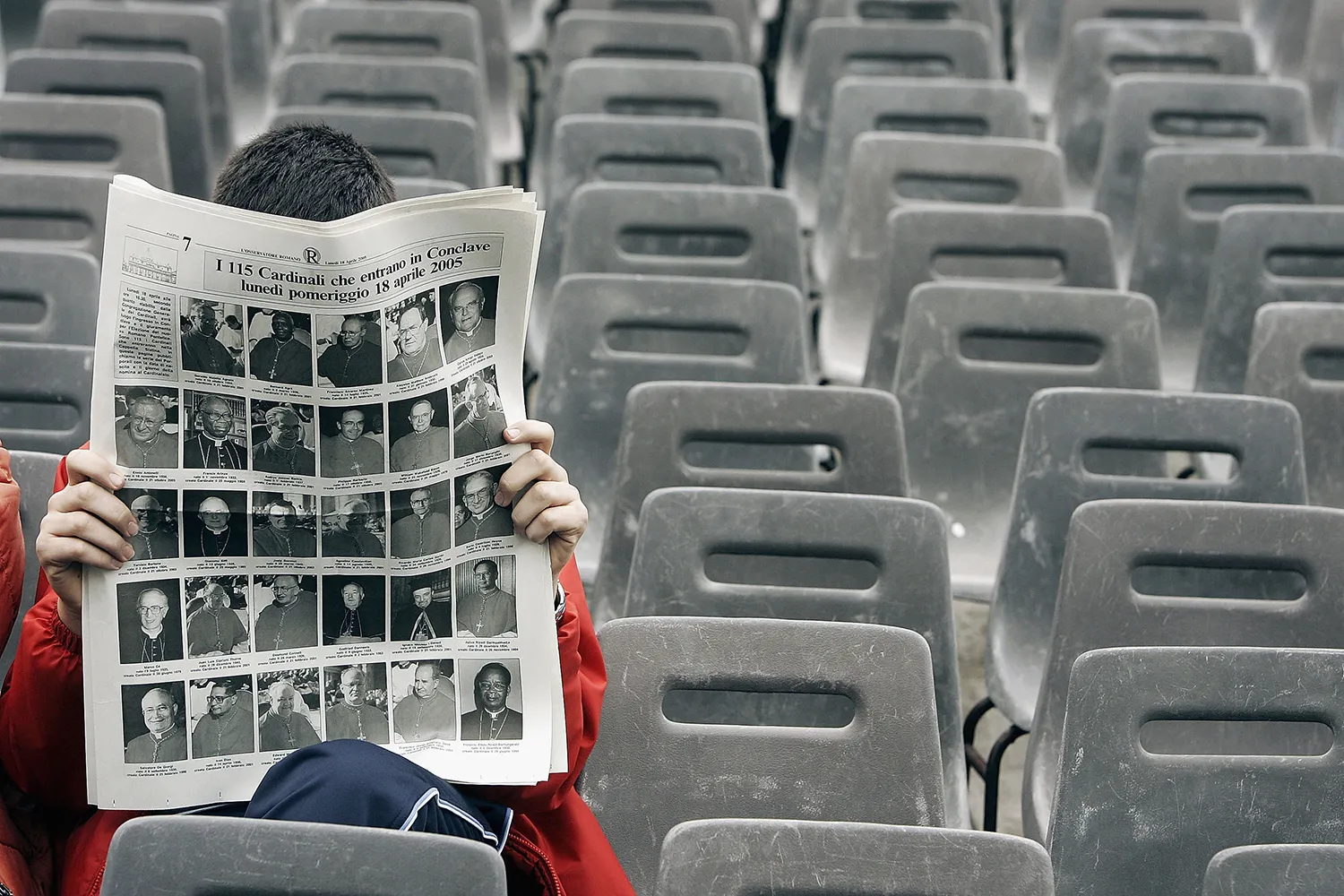
That’s not to say Vatican politicking isn’t ruthless. Think Game of Thrones but without the bloodshed. Various factions in the church push their champion. But if he isn’t able to garner enough support, a champion is ditched without mercy, no matter how preeminent he might be.
And, just as in Game of Thrones, it isn’t immediately clear who will in the end. This is especially true of the upcoming conclave. “All bets are off when it comes to predicting who will succeed Francis,” said Philip Shenon, a former investigative reporter at the New York Times and the author of Jesus Wept, a new book on the modern church. “There’s no obvious front-runner.”
One reason why is that Francis completely overhauled the College of Cardinals. He appointed 110 out of the 138 cardinals who will vote in the conclave. That’s nearly 80 percent. The catch: Many of them come from far-flung corners of the world. They have spent little time together and therefore barely know one another.
Who wins is thus anyone’s guess. “It might be somebody very exotic, since many cardinals are from the other side of the world,” said Frédéric Martel, the author of In the Closet of the Vatican, an investigation into homosexuality in the church that draws on 1,500 interviews, including with prelates. “In fact, it might be a big surprise,” Martel added, “since nobody will have known of the sociology of the new conclave!”
This hasn’t stopped all of Rome from buzzing about the papabili, or the “pope-able.” For Martin Palmer, the CEO of FaithInvest, an NGO that works closely with the church, and a member of the Vatican COVID-19 Commission, the next pontiff will come from one of two factions within the church: He will belong either to “the right wing” in the United States and Africa or to the more liberal “Francis appointments” in Asia and Africa.
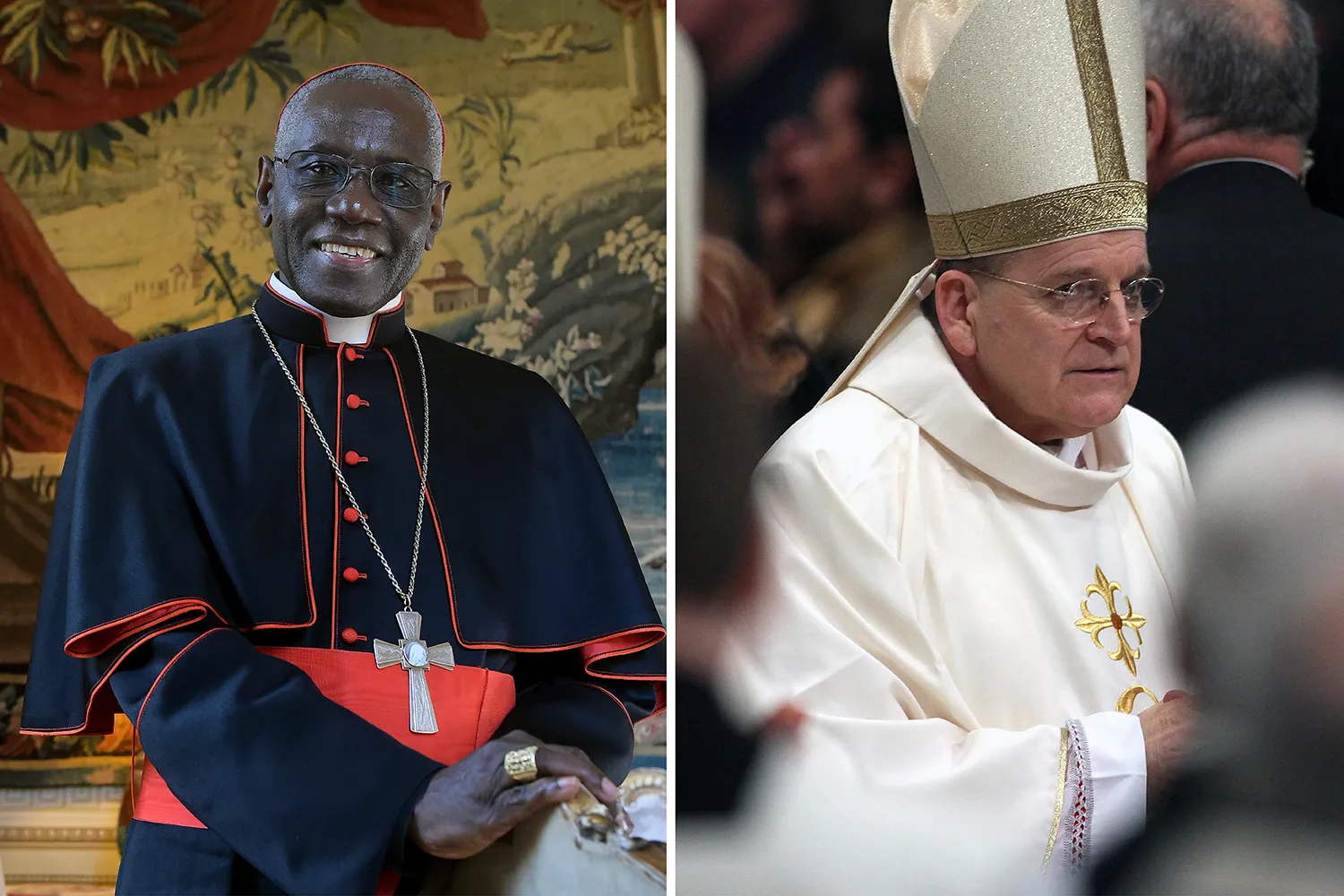
On the right, Palmer identifies Robert Sarah, a 79-year-old cardinal from Guinea, as a papabile. Sarah has long been in the mix to succeed Francis. A former prefect of the Dicastery for Divine Worship and the Discipline of the Sacraments, the Vatican department overseeing the Latin Church’s liturgy, he is the anti-Francis candidate.
A traditionalist heavyweight who doesn’t pull his punches, Sarah has echoed the white-nationalist Great Replacement conspiracy theory. Europe, he said in 2019, is at risk of being “invaded by foreigners, just as Rome has been invaded by barbarians.” As he sees it, the continent is locked in an existential battle with the Islamic faith. “If Europe disappears, and with it the priceless value of the Old Continent, Islam will invade the world, and we will completely change culture, anthropology, and moral vision.”
Without surprise, Sarah takes a hard line on homosexuality. He has slammed Francis’s decision to allow same-sex couples to receive sacraments. And he has likened “homosexual and abortion ideologies” to “Nazi-Fascism and communism.”
Another conservative contender, Palmer said, is Raymond Burke, a 76-year-old cardinal from the United States. Best known for his love of the cappa magna, Burke is as outspoken in his statements as in his fashion choices. He has repeatedly criticized Francis—so much so that the pope took away his subsidized Vatican apartment. The American papabile has close ties to the Make America Great Again movement. For many years, he was an ally of Steve Bannon until the two fell out. Still, Burke remains a power player in U.S. conservative Catholic circles.
In the age of Trump, however, that may be a liability. Palmer, who was recently at the Vatican, said that “the negative impact of Trump around the world has significantly cast a cloud over right-wing American rhetoric. Burke and by implication Sarah are seen as tainted by their association with Trump-style politics.”
As a consequence, a staunch conservative like Sarah or Burke may not have the numbers to win. “Sarah and Burke have zero chance—or as many chances as Trump to win the Eurovision,” Martel quipped. “They are ultra-right-wing and ultra-marginal figures. It’s a joke!”
Shenon put it more diplomatically. “Well, conservatives could try, and they probably will,” he said. “But when the doors to the Sistine Chapel are bolted shut, there just aren’t that many of them in the College of Cardinals—at least not enough of the rock-ribbed archconservatives who would vote for a candidate who would reverse Francis’s legacy.”
The next pontiff, Shenon predicts, will at least maintain some degree of continuity with Francis. “Whatever happens, it’s fair to assume that the next pope will not have a dramatically different vision of the church’s future,” Shenon said. He believes that the cardinal electors appointed by Francis “doubtless feel great loyalty to Francis’s progressive legacy.”

Among them, Shenon identifies Cardinal Pietro Parolin—the Holy See’s secretary of state since 2013—as an “obvious candidate.” The 70-year-old Italian prelate would respect the late pope’s agenda. He has said Francis’s reforms were “the action of the Spirit, [so] there can be no U-turn.” If the cardinal electors are looking for a safe pair of hands, someone who knows the Curia and can safeguard Francis’s achievements, then Parolin is their man.
In a similar vein, Martel points to Cardinal Matteo Zuppi, the 69-year-old archbishop of Bologna. Zuppi has Francis’s trust. Crucially, as the head of the Italian Episcopal Conference, he’s also popular with many prelates.
But if they want a bolder choice, then cardinal electors could go for the Ghanaian Cardinal Peter Turkson. The 76-year-old is the chancellor of the Pontifical Academy of Sciences and Social Sciences. He has long been ranked as a papabile, even though his star has dimmed after he fell out with Francis. But don’t count him out, said Palmer, who has worked with Turkson and thinks that “he really speaks for the engaged African Church.”
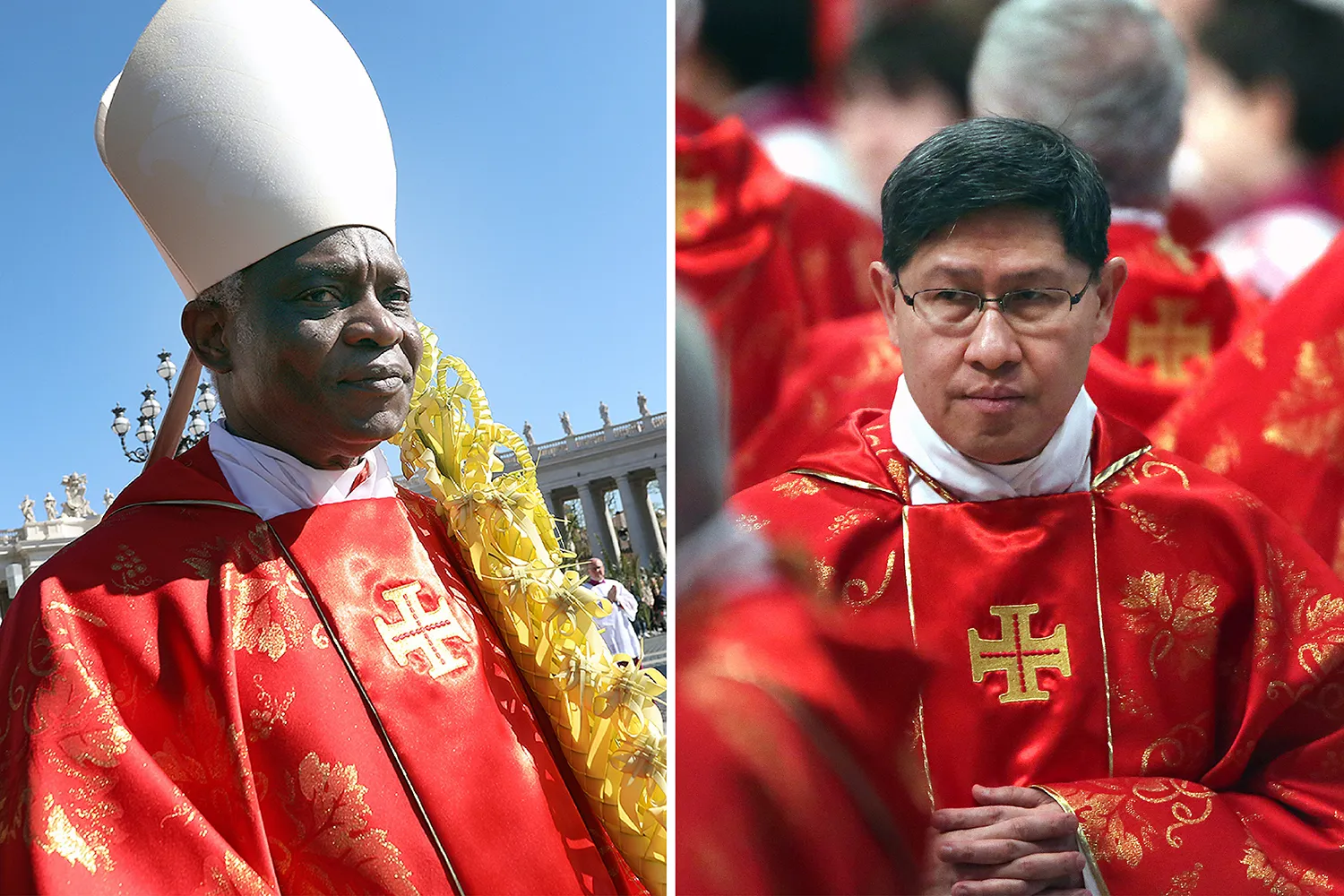
Palmer also thinks that Cardinal Luis Tagle, the former archbishop of Manila, has a serious chance. Hailed as the “Asian Francis,” Tagle is a progressive. He backed Francis in his drive to protect the environment and his plans for a more inclusive church. “My vision for a synodal church is a church that rediscovers this wonderful gift of the Spirit given to the whole church in Vatican II,” Tagle said in 2023, referring to the Second Vatican Council, which modernized the church in the 1960s and has been attacked by conservatives ever since.
The Filipino prelate has also taken a more compassionate approach to doctrinal matters, deploring the “harsh words that were used in the past to refer to gays and divorced and separated people, the unwed mothers, etc.”
At 67, Tagle is young by papal standards. Francis was elected at 76, Benedict XVI at 78. If he does become pope, then he would have the time to enact sweeping reforms. “In recent years, Francis has seemed pretty convinced his agenda—and the spirit of Vatican II—will survive his papacy,” Shenon said, “which is why he keeps insisting with a smile that his successor will call himself John XXIV.” John XXIII was the pope who initiated Vatican II. Tagle could well be the kind of successor Francis envisioned—perhaps even taking the name John XXIV.
If neither conservative nor liberal factions manage to win enough support among the cardinal electors, then a compromise candidate may emerge. “Historically speaking, divided conclaves have often favored ostensibly neutral candidates,” Wärnberg said. “A papabile with a lower public profile, such as the careful and erudite Cardinal Peter Erdo of Hungary or the reserved and pragmatic Cardinal Anders Arborelius of Sweden, could, therefore, emerge.”
In recent months, another ostensibly neutral prelate has shot up to the top of the papabili list: Cardinal Pierbattista Pizzaballa, the Latin patriarch of Jerusalem. He’s Italian but has spent most of his career in Israel. This means that he isn’t associated with the Curia and remains something of a blank slate.
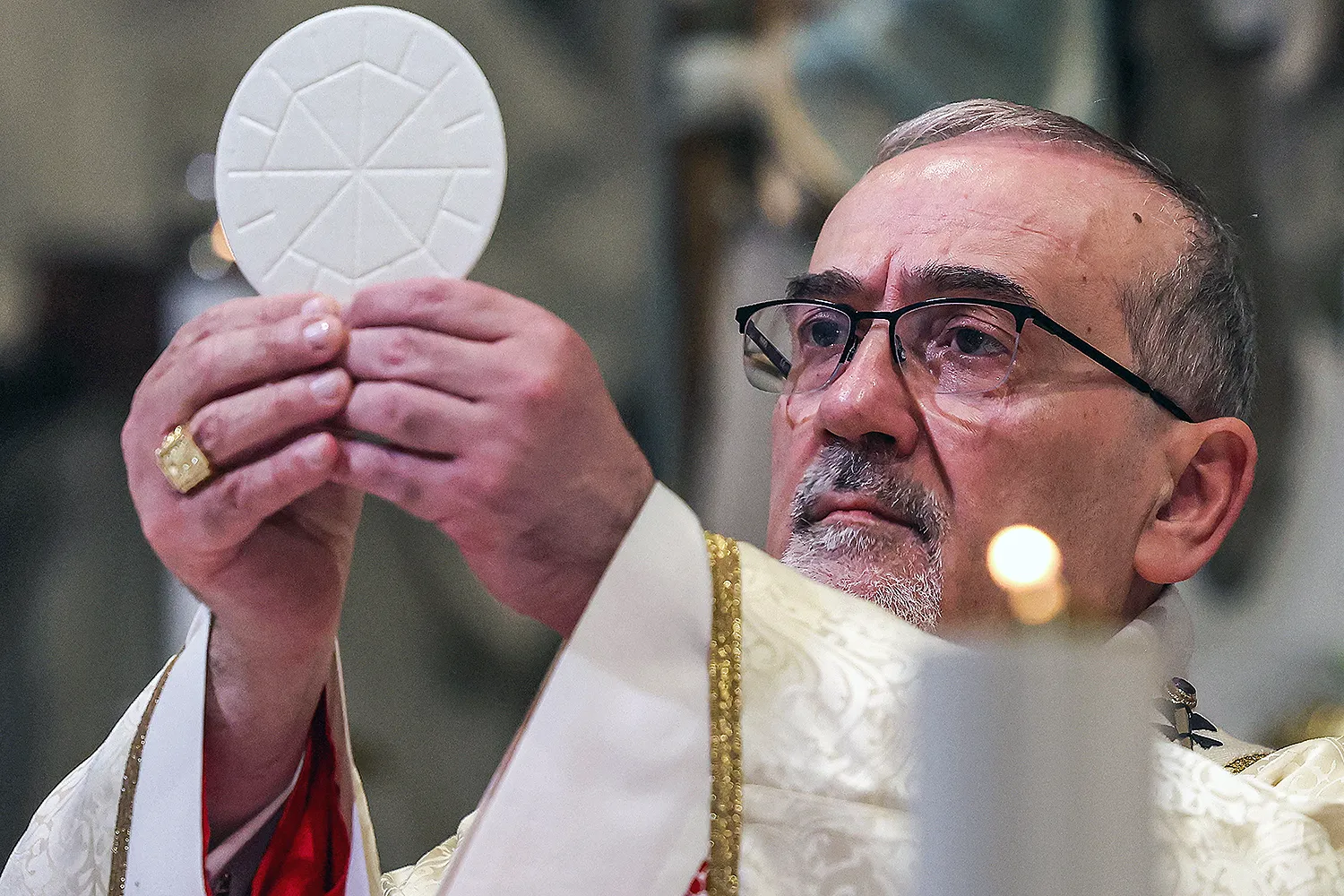
On many key issues, Pizzaballa has kept his cards close to his chest. And when he hasn’t, he has sent signals to both liberals and conservatives. With liberals, for instance, he backed Laudato Si, Francis’s 2015 encyclical on environmental justice. But Pizzaballa is also open to the Latin Mass, prized by conservatives. “The cardinal is very meticulous in liturgical celebration and has no problem with the traditional Mass,” David Neuhaus, a former patriarchal vicar for Hebrew-speaking Catholics in the Latin Patriarchate of Jerusalem, told National Catholic Register.
Despite being only 59, Pizzaballa has plenty of political experience. In 2014, he orchestrated the “peace prayer” in the Vatican Gardens, a landmark summit between Francis, then-Israeli President Shimon Peres, and Palestinian President Mahmoud Abbas. Similarly, Pizzaballa has tried to strike a measured tone over the Gaza war, talking both about the horrors of the Oct. 7, 2023, massacres and the suffering of the Palestinian people.
Another compromise candidate could be the Canadian Cardinal Michael Czerny. “If the conclave is looking for a safe caretaker pope to ease the transition from the dynamism of Francis, Cardinal Czerny, the cardinal at the head of the Dicastery for Promoting Integral Human Development, is also a possibility. Quiet, efficient, and running the Laudato Si Dicastery, it is his dicastery that will guide that most radical of encyclicals,” Palmer said. “But don’t expect the church to be quite so on message about climate or the environment post-Francis.”
Conclaves aren’t an exact science. With a few exceptions, they are notoriously difficult to predict. The papabili seldom get to sit on the throne of St. Peter. The Italians have a proverb to that effect. Chi entra papa in conclave, ne esce cardinale. He who enters the conclave as pope leaves it as cardinal.
The post Who Will Be the New Pope? appeared first on Foreign Policy.

